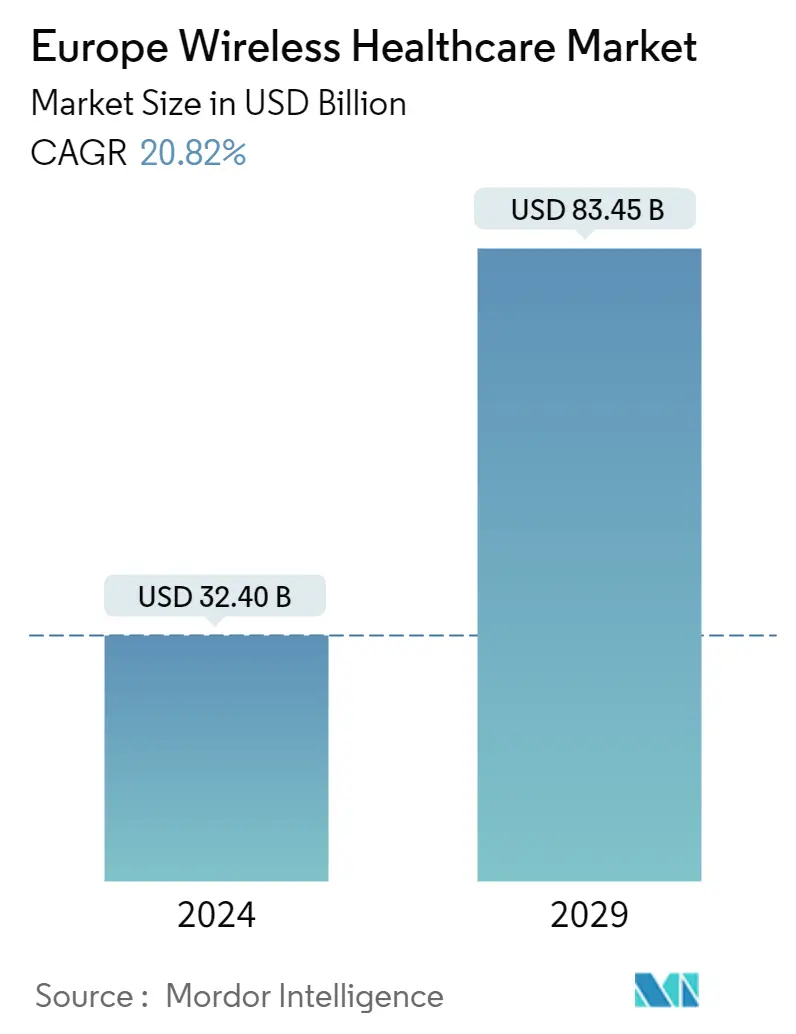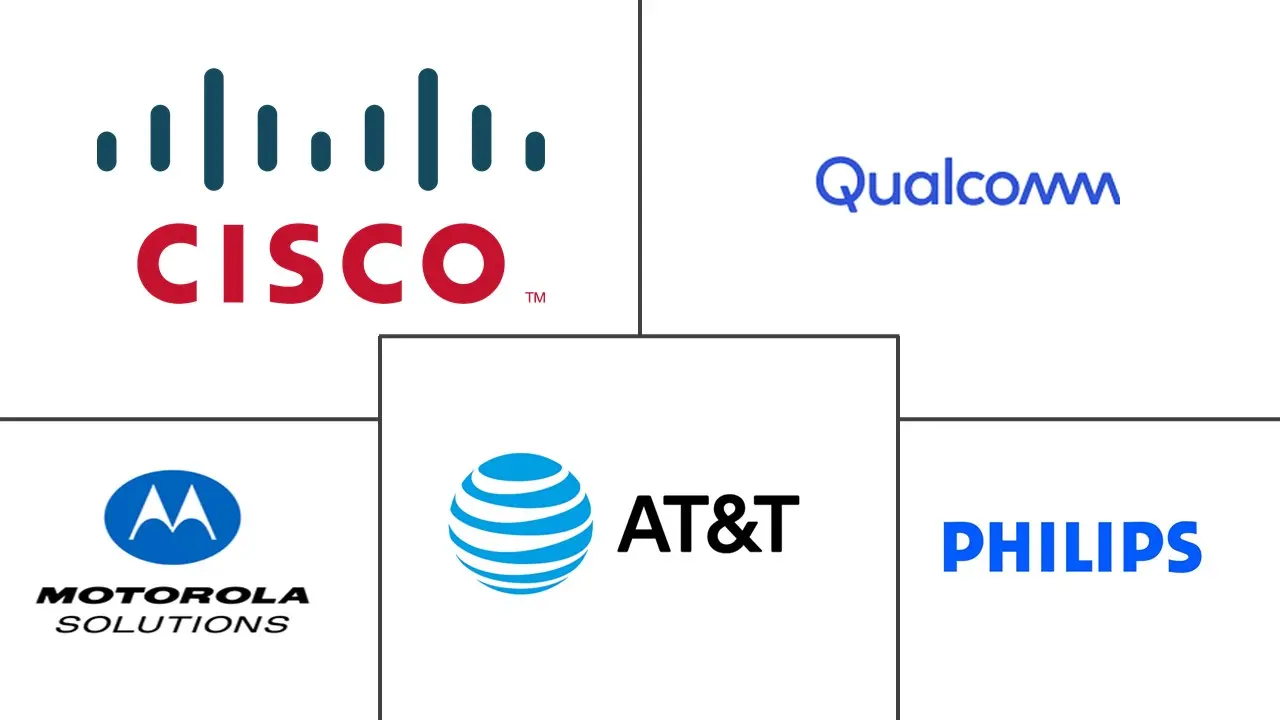Market Size of Europe Wireless Healthcare Industry

| Study Period | 2019 - 2029 |
| Base Year For Estimation | 2023 |
| Market Size (2024) | USD 32.40 Billion |
| Market Size (2029) | USD 83.45 Billion |
| CAGR (2024 - 2029) | 20.82 % |
| Market Concentration | Medium |
Major Players
*Disclaimer: Major Players sorted in no particular order |
Need a report that reflects how COVID-19 has impacted this market and its growth?
Europe Wireless Healthcare Market Analysis
The Europe Wireless Healthcare Market size is estimated at USD 32.40 billion in 2024, and is expected to reach USD 83.45 billion by 2029, growing at a CAGR of 20.82% during the forecast period (2024-2029).
- In recent years, the healthcare sector in Europe has been undergoing a significant digital transformation. The market studied has been driven by the penetration of the Internet and wireless communication technologies. Caregivers leverage wireless medical equipment to offer patients good quality care rather than being just preoccupied with time-consuming administrative tasks in a connected hospital. Nurses and Doctors would easily access up-to-date patient information, allowing treatment decisions assisted by real-time medical information, thus resulting in enhanced outcomes for patients.
- The major trend supporting the growth of wireless healthcare devices is the rising trend of smart hospitals in the regions. Europe’s aging population also puts a lot of financial pressure on communities and healthcare services. The costs for cities to provide health services for older people are expected to double by 2030. A shortage of nurses to care for the elderly is hampering the healthcare segment.
- Europe has one of the most developed healthcare industries, and the region is also an early adopter of advanced technologies, thus driving the growth of wireless healthcare services. A significant proportion of the European population is aged 65 years and above, and according to the UN, the figure is expected to significantly grow to 24% by 2030. The integration of wireless technology in healthcare enables the facilitation of enhanced patient treatment systems in the region.
- For instance, to better understand and improve the workflow of nursing staff, hospitals are equipping nurse ID badges with an RFID tag that works with the hospital's Wi-Fi network. These tags track the movement of the nurses throughout their shifts. The data is captured and analyzed, providing insights to the hospital to improve the processes. Wireless RFID technology also allows hospitals to track the real-time location of critical equipment and the condition of the equipment.
- Since the beginning of the COVID-19 pandemic, many smartphone apps have been developed, some of them by public authorities. The World Health Organization (WHO) is working on the development of an application that would provide medically-approved information and advice to users based on their symptoms.
- However, issues about cybersecurity and privacy are restraining the market growth, as vast amounts of healthcare data are generated during treatment in medical centers, such as hospitals and clinics, and the theft of such data can damage patients' privacy.
